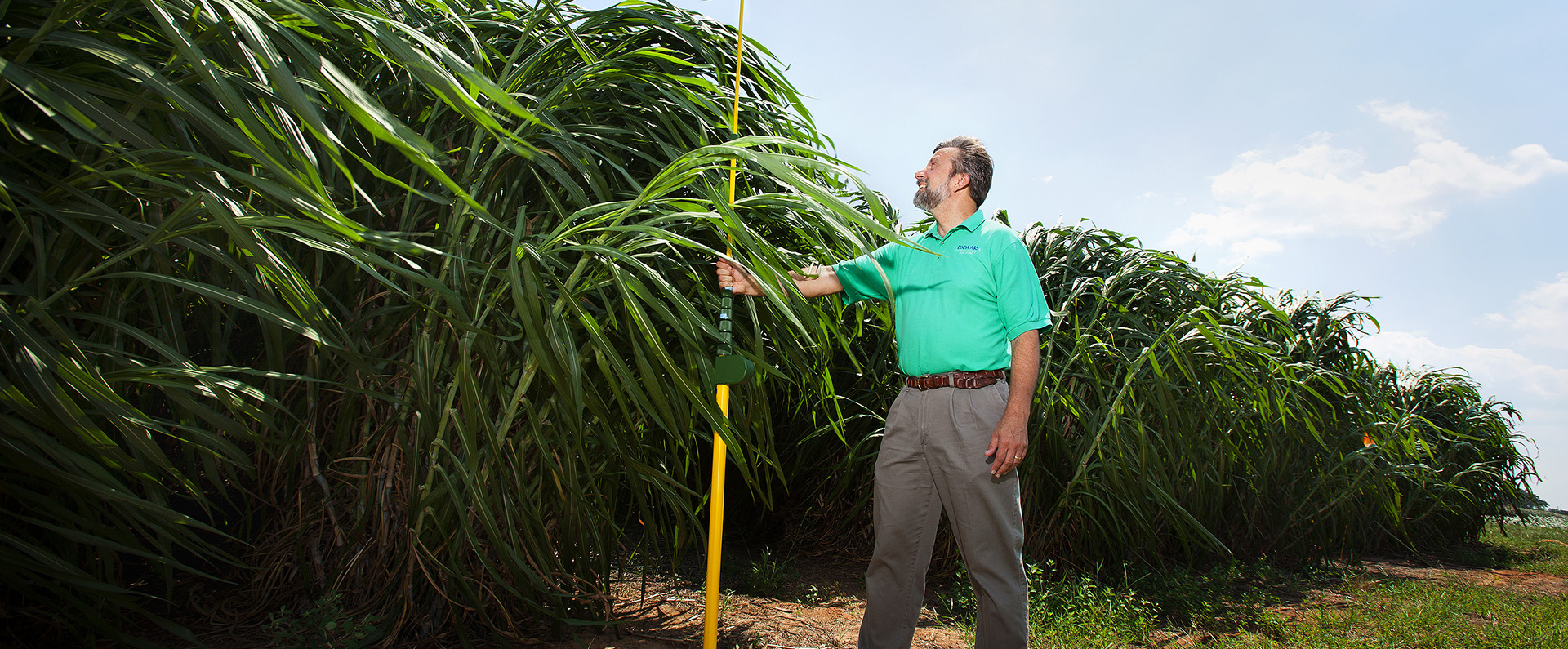Improving Bioenergy Production
ARS researchers are developing sustainable, regional approaches for producing crops allowing rural communities to participate in the emerging biofuels and biobased products economy. As part of this effort, ARS made numerous advances in bioenergy production this past year. ARS scientists converted Napier grass into ethanol with an estimated yield of 1,100 gallons per acre. By comparison, a corn field typically produces around 500 gallons per acre. Napier grass, a warm-season grass that has low water and nutrient requirements, can grow in marginal or uncultivated lands, and it does not compete with food crops for growing space. It is being developed as a high-yielding bioenergy crop for ethanol production in the Southeastern United States. When grown alongside corn as a "pull" crop, Napier grass attracts insects, improves soil fertility, and prevents erosion.
A challenge to using crops as biofuels involves converting the crops into usable bioenergy. Nearly 1.3 billion tons of plant biomass is available each year in the United States for use as energy crops. Conversion of this biomass into 30 billion gallons of biodiesel per year (62 percent of current U.S. diesel consumption) could happen using microorganisms called "oily" yeasts. Scientists at ARS's Culture Collection in Peoria, IL, screened yeast strains and identified those that can convert biomass into biofuel. This new technology is expected to advance the economic feasibility of producing high-quality biodiesel and jet fuels from renewable biomass.
Related Information
Article: New Bioenergy Yeast Is an Overachiever
Research Program: Napier grass


